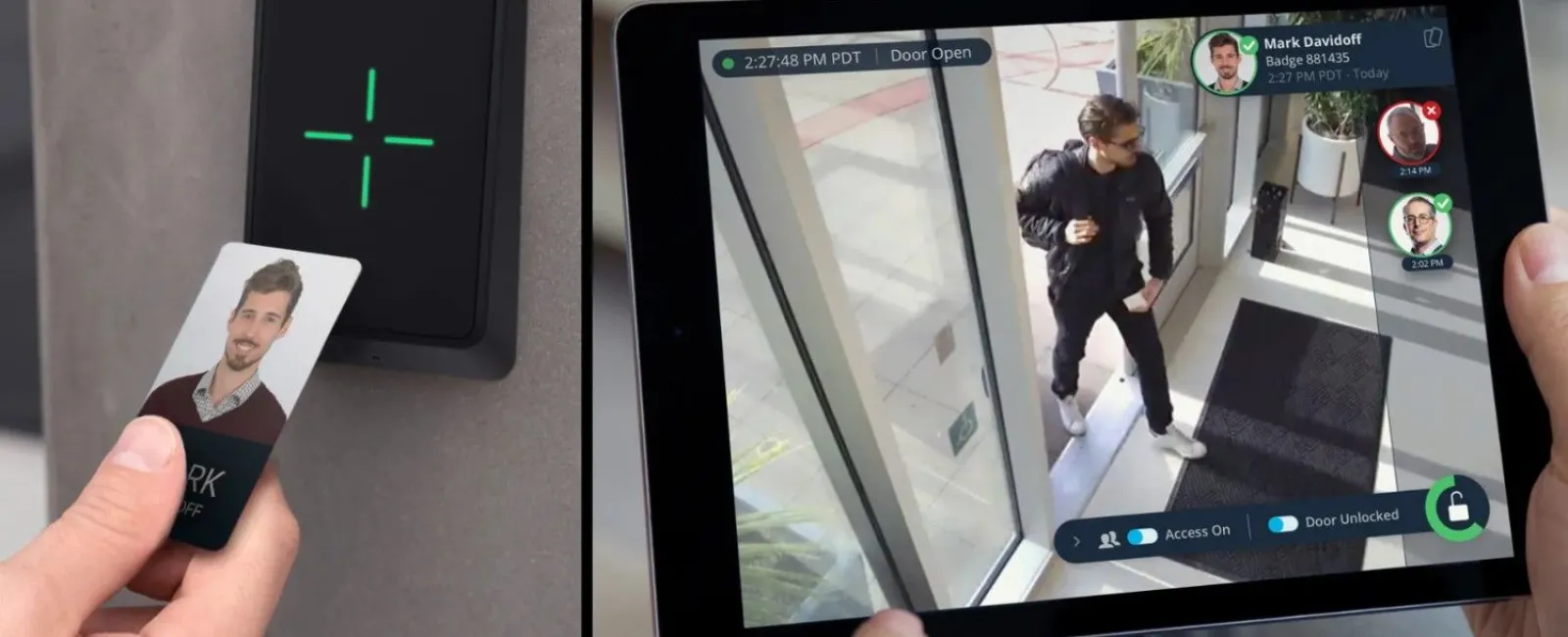If your access card is not working, it can cause employees to become frustrated, lead to operational disruptions, and even pose security risks. A card reader for door access should be seamless, secure, and reliable. However, when things go wrong, it's important to understand what's causing the issue and how to fix it.
Why Is My Access Card Not Working?
If your key card is not working, start by confirming whether it's a one-time fluke or a symptom of a larger issue. In many cases, a non-functional card reader access system comes down to a few core issues:
Power or connectivity failure
Software glitches
Credential issues
Damaged readers or cards
Misconfigured access settings
Even with high-end systems from Avigilon, Verkada, or LenelS2, problems can arise when hardware and software don't communicate as expected.
Is the Card Reader Not Working System-Wide or Isolated?
If the issue is isolated to one door or user, it's likely a localized problem, such as a faulty card or a wiring issue with that specific reader. However, if multiple access points are failing across your building, it may indicate a system-wide software or network problem.
Common Causes of Access Control Reader Issues
Understanding the root cause helps you avoid quick fixes that don't address the core problem. If your card reader is not working, here are the most common reasons.
1. Faulty or Demagnetized Cards
Physical access cards can wear out or become demagnetized over time, especially when stored near cell phones or exposed to extreme heat. In systems like Openpath or ButterflyMX, mobile credentials or app-based access may sidestep this problem, but even digital keys can become corrupted.
2. Reader Malfunction or Power Loss
The door reader may be offline due to a power issue, faulty wiring, or an internal hardware failure. Some modern readers from Rhombus and Avigilon include LED or touchscreen indicators. If the screen is blank or unresponsive, the issue could be electrical or firmware-related.
3. Credential Deactivation or Expiry
If your access control system is not working, it might not be the reader; it could be your access level. Cards that are expired, revoked, or misconfigured in the system won't authenticate, even if the hardware is fully functional.
4. Software or Network Glitches
Centralized access control systems rely on smooth communication between the controller, software, and endpoints. Any break in that chain (caused by a server update, network outage, or misconfigured API) can result in access denial.
Troubleshooting a Card Reader Not Working
When you're locked out or dealing with a card reader not working, follow these steps to troubleshoot the issue.
Step 1: Confirm Card Validity
Test your card on a different reader
Try a known-good card on the faulty reader
Reissue or replace the card if needed
If mobile credentials are in use (like with Openpath or ButterflyMX), verify that the app is active, permissions are granted, and the device has Bluetooth or NFC enabled.
Step 2: Inspect the Reader
Check for signs of physical damage, exposed wiring, or disconnected cabling. If the reader has no lights or is not responsive, it may have lost power or failed internally.
Step 3: Check System Logs
Modern platforms like Verkada, Rhombus, and LenelS2 maintain access logs and real-time activity tracking. Log in to the management portal and look for:
Authentication failures
Reader disconnections
User credential changes
This can point you directly to the issue, whether it's a deactivated user, network drop, or configuration error.
Step 4: Reset or Reboot
Reboot the affected access control panel or reader, if possible. A soft reset often resolves temporary memory or software issues, particularly with integrated smart systems.
Step 5: Call a Certified Technician
If you've checked all the above and the access control system is still down, it's time to bring in an expert.
Access Control Maintenance Tips to Prevent Reader Issues
Even high-end systems from LenelS2, Avigilon, or Rhombus can run into issues without proper maintenance. To reduce the risk of a key card not working, follow these best practices:
Keep Readers Clean and Dry
Access readers are often exposed to the elements. Moisture, dust, and corrosion can interfere with sensors and electronics. Use weatherproof models where appropriate and inspect regularly.
Update Software and Firmware
Manufacturers like Verkada and Openpath regularly release updates that fix bugs, improve speed, and close security vulnerabilities. Set a schedule to keep your system current.
Monitor Access Logs
Look for patterns, such as multiple failed attempts, unexpected deactivations, or offline readers, that can signal a deeper issue. Dashboards from ButterflyMX and LenelS2 make this easy with real-time alerts.
Train Your Staff
End users should know how to hold cards properly, how to report issues, and what to avoid (like taping over readers or stacking keycards). Human error is a common cause of misreads.
Working With iS3 for Card Reader Access Control Support
At iS3, we specialize in installing access control systems throughout the Atlanta area tailored to your facility's security needs. Our team is trained on all major systems and certified to troubleshoot issues quickly and effectively.
We understand that a malfunctioning access card is a disruption to your team's productivity and safety.
Whether you're operating a commercial office, multi-tenant building, or data center, iS3 can help you reduce downtime, strengthen your physical security, and ensure consistent access control functionality.
Looking to Upgrade Your Access Control System?
Whether you're replacing outdated readers or planning a new installation, iS3 Tech Services in Atlanta is here to help. We partner with leading manufacturers like Avigilon, Openpath, Rhombus, ButterflyMX, Verkada, and LenelS2 to deliver fully integrated access control systems built for your environment.
Let's design a smarter, more secure solution customized for your facility. Contact us today!
